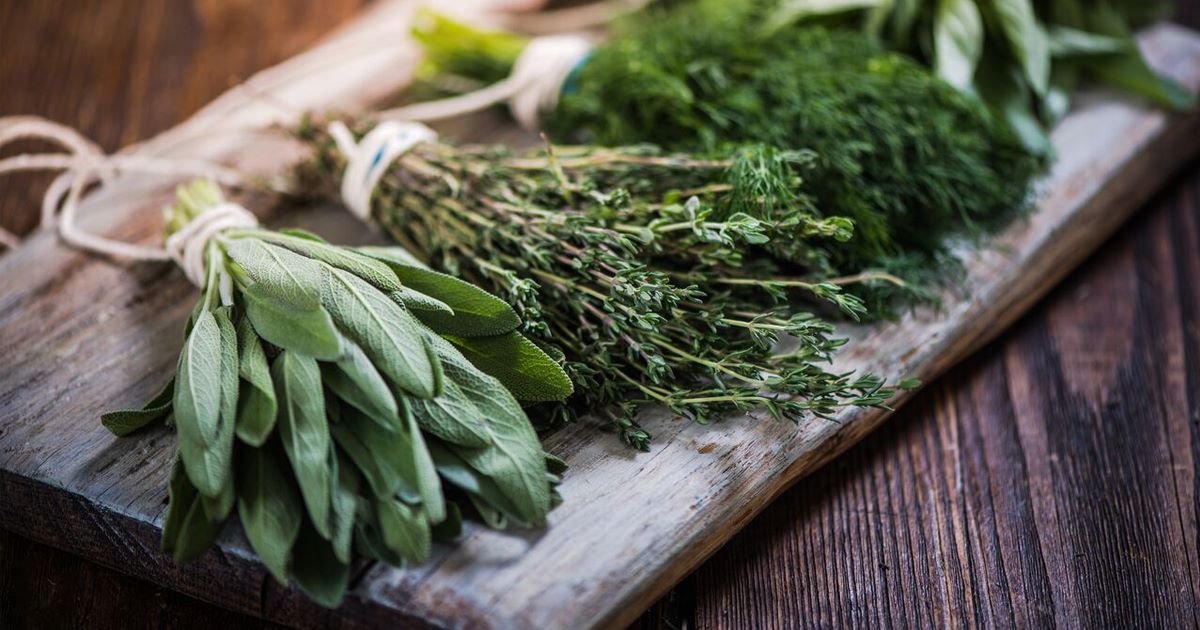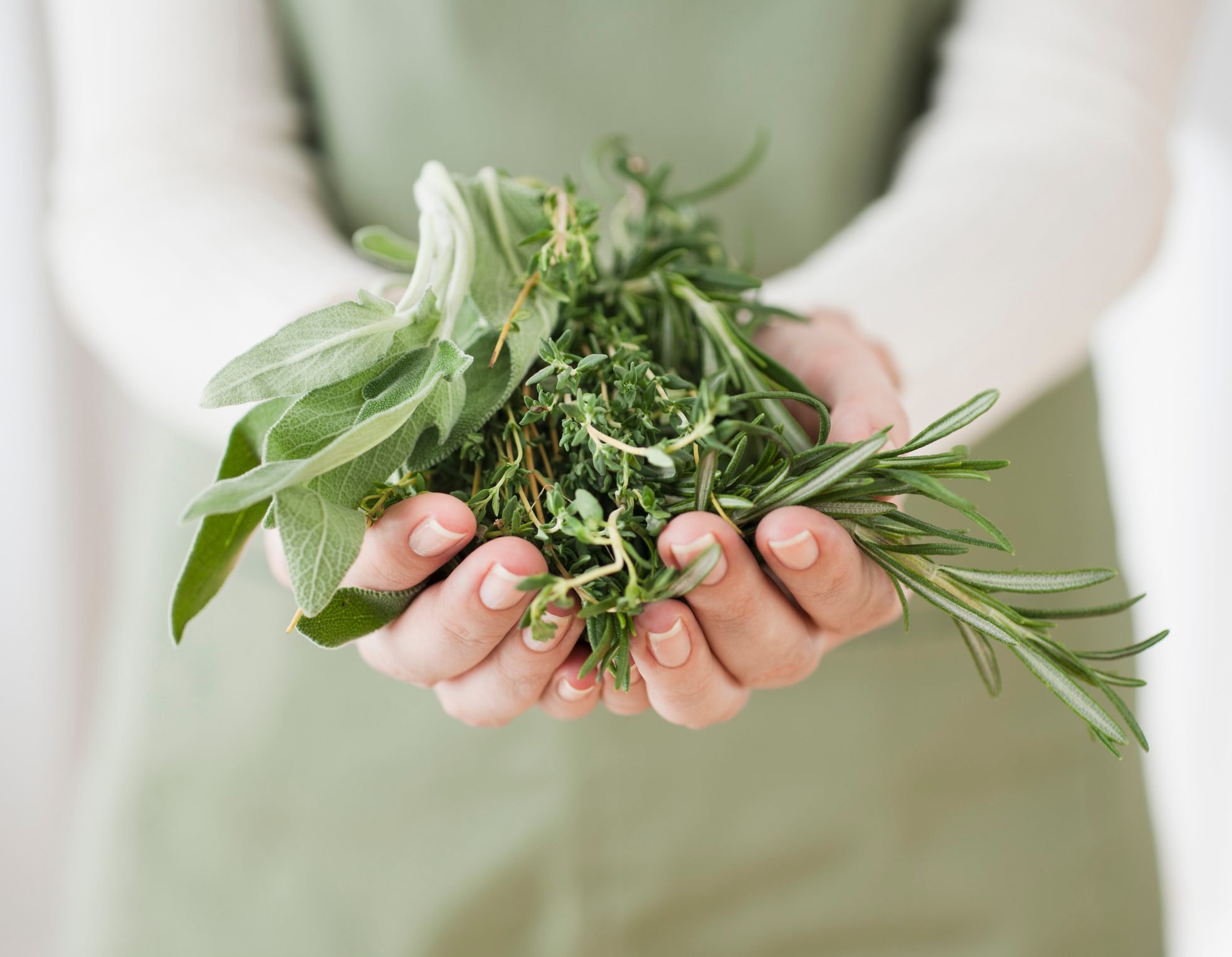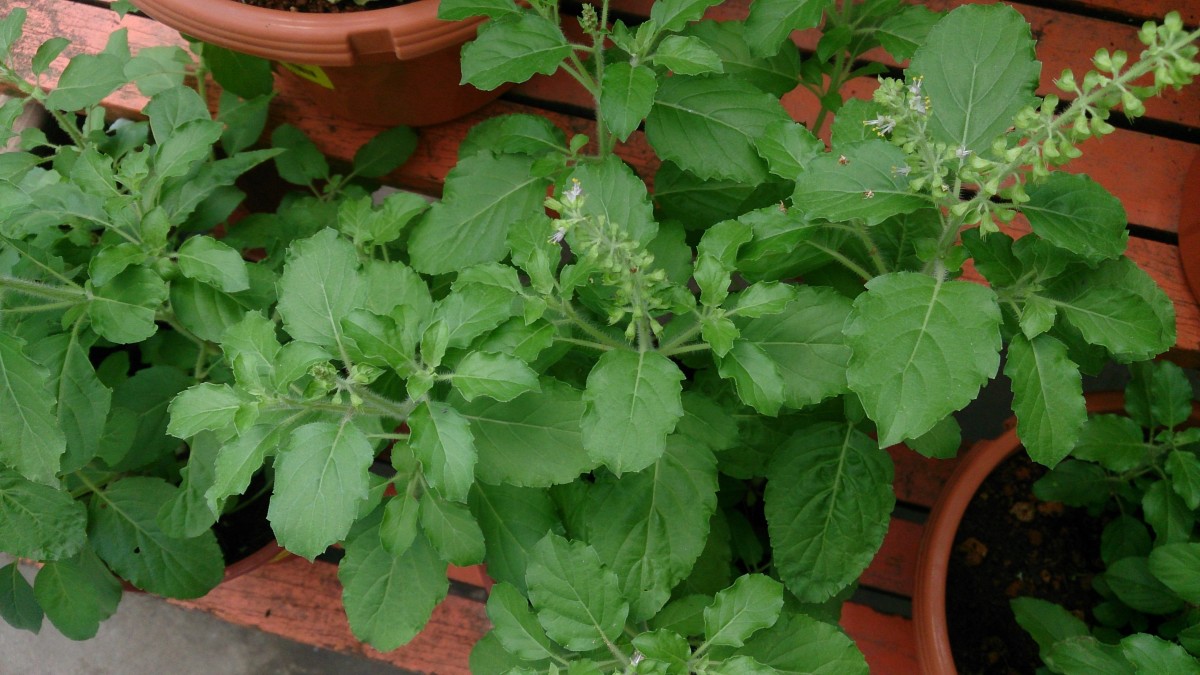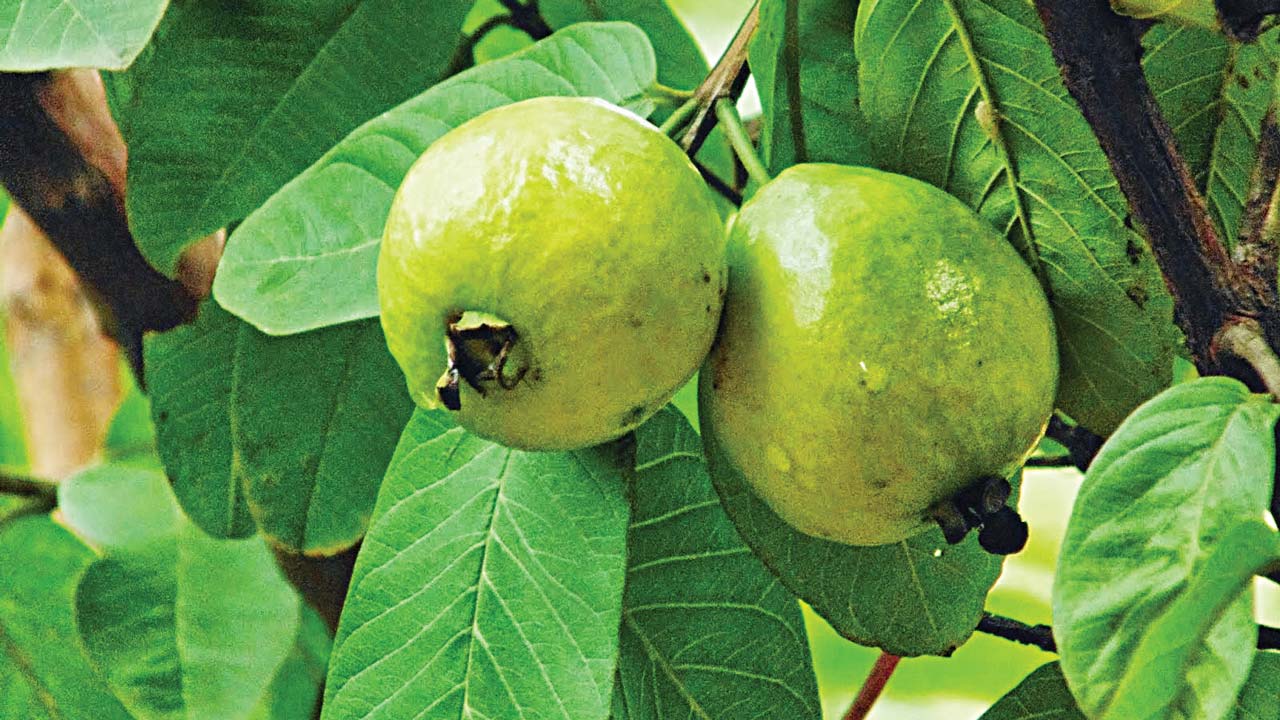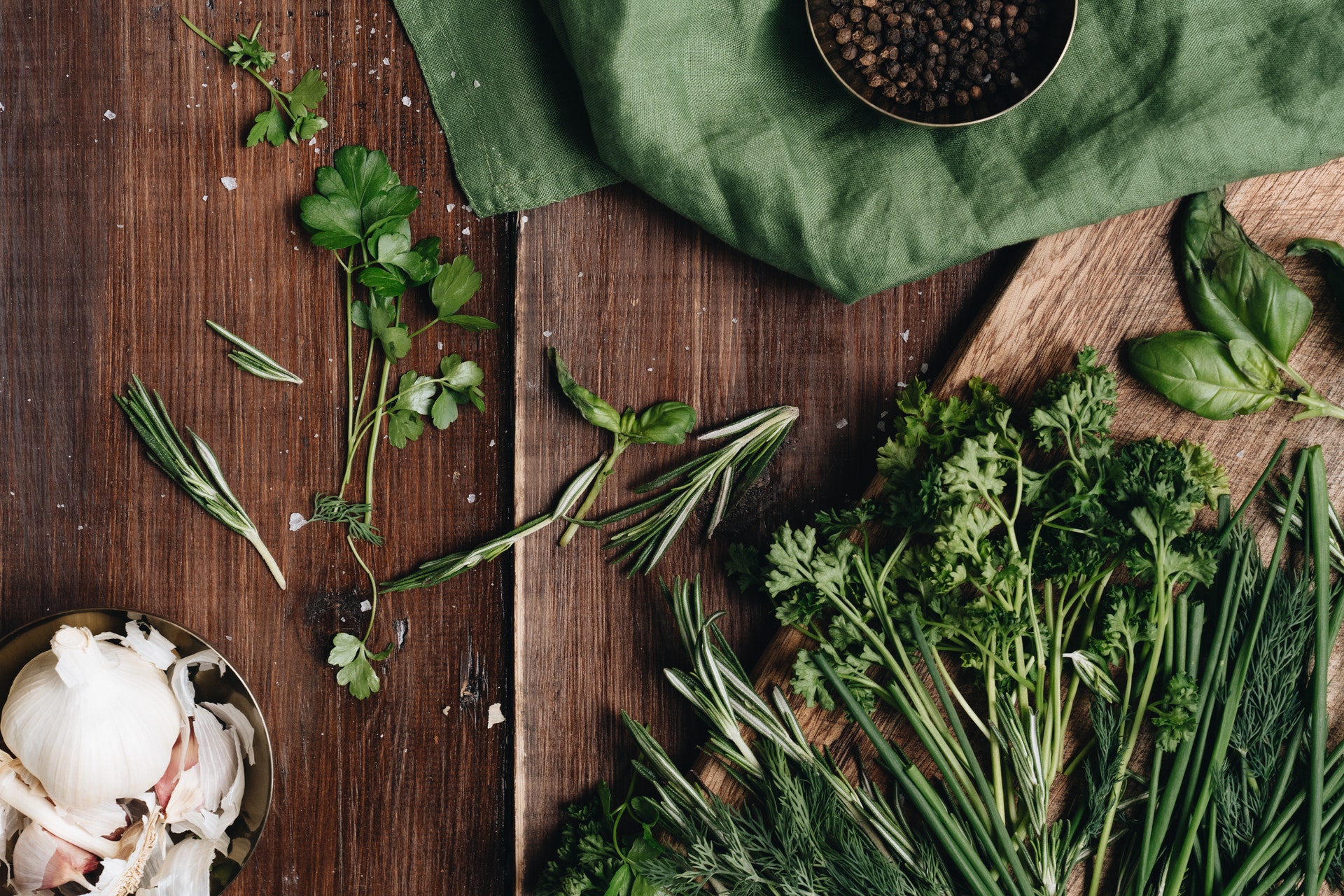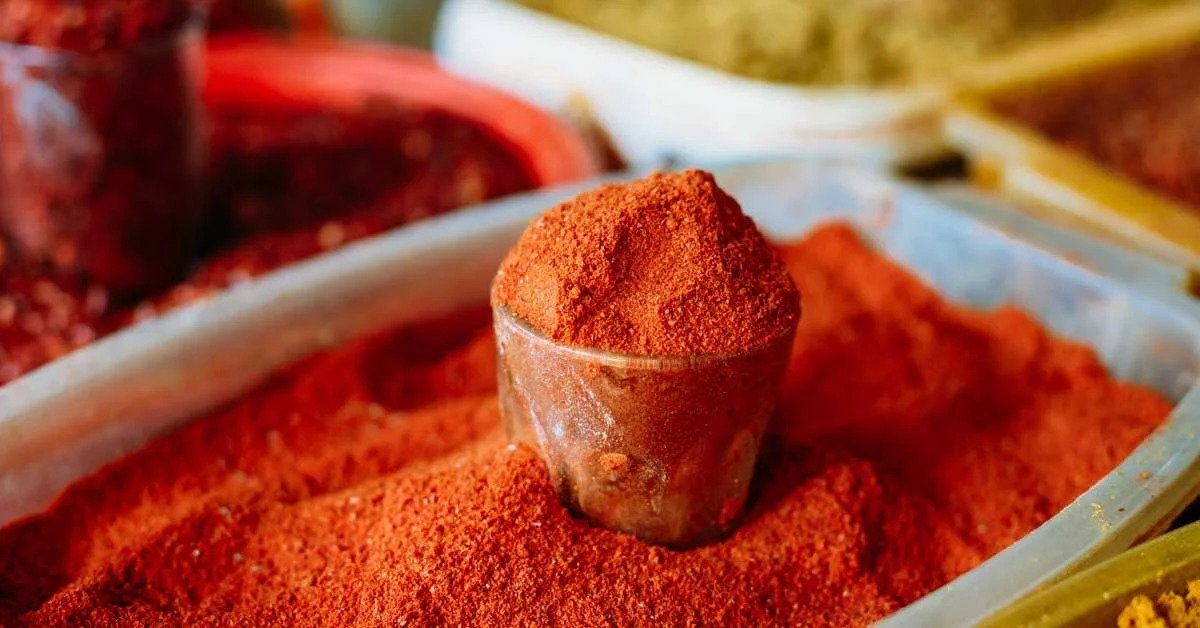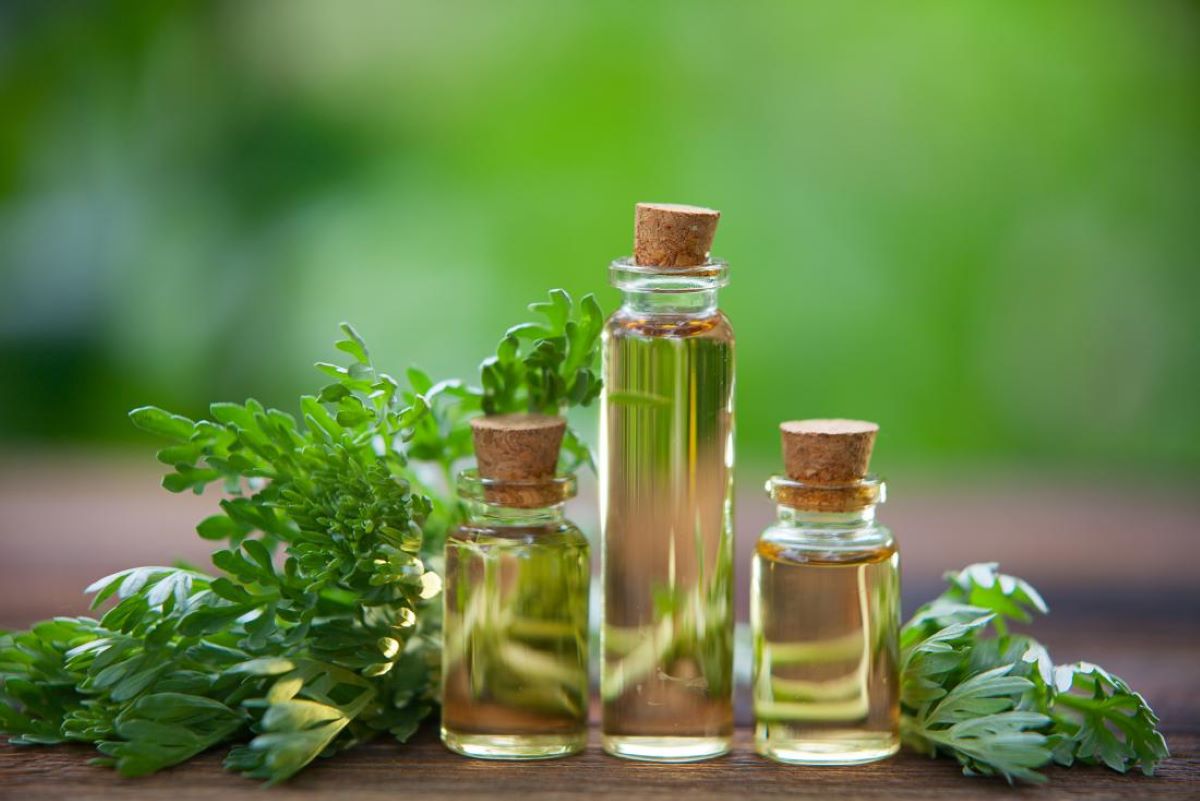Home>Gardening News and Trends>Gardening Trends>What Herbs Are Good For Bloating


Gardening Trends
What Herbs Are Good For Bloating
Modified: February 9, 2024
Discover the latest gardening trends and find out which herbs are known to help with bloating. Enhance your gardening skills and improve your digestive health.
(Many of the links in this article redirect to a specific reviewed product. Your purchase of these products through affiliate links helps to generate commission for Chicagolandgardening.com, at no extra cost. Learn more)
Table of Contents
Introduction
Gardening is not only a delightful hobby, but it is also a wonderful way to reconnect with nature and beautify our surroundings. As we embrace the joys of gardening, it’s important to stay up-to-date on the latest trends in order to make our gardening experience even more rewarding.
In recent years, there has been a surge in interest in gardening trends, with a particular focus on sustainable and eco-friendly practices. People are increasingly seeking ways to make their gardens more self-sufficient and harmonious with the environment. Additionally, there is a growing fascination with incorporating edible plants into our gardens, making them both aesthetically pleasing and functional.
With these trends in mind, let’s explore some of the fascinating gardening trends that are shaping the gardening landscape.
1. Garden-to-Table: One of the most popular trends today is the concept of garden-to-table. This involves growing your own herbs, fruits, and vegetables, and using them in your cooking. Not only does this provide a sense of satisfaction and accomplishment, but it also ensures that you have access to fresh and flavorful ingredients right at your fingertips. Whether you have a spacious backyard or a small balcony, there are numerous ways to create a thriving garden that caters to your culinary interests.
2. Vertical Gardening: As urbanization continues to increase, space for traditional gardens is becoming more limited. This is where vertical gardening comes into play. Vertical gardening involves using walls, trellises, and other vertical surfaces to grow plants. This innovative approach maximizes space while creating a visually stunning and unique garden. From hanging baskets to vertical planters, there are endless possibilities to explore in vertical gardening.
3. Native Plants: In recent years, there has been a push to preserve and promote native plants. These plants are well-adapted to the local climate, require less water and maintenance, and provide essential habitats for local wildlife. By including native plants in our gardens, we can create a more sustainable and resilient ecosystem.
4. Organic and Chemical-Free Gardening: With a growing concern for our health and the environment, many gardeners are opting for organic and chemical-free gardening practices. This involves avoiding the use of synthetic fertilizers, pesticides, and herbicides. Instead, organic gardeners focus on building healthy soil, using natural pest control methods, and fostering biodiversity.
5. Pollinator-Friendly Gardens: There is a growing awareness of the importance of pollinators, such as bees and butterflies, for the health of our ecosystems and food production. To support these vital pollinators, gardeners are creating pollinator-friendly gardens by planting a variety of nectar-rich flowers and providing shelter and water sources.
By staying informed about these gardening trends, you can create a garden that not only reflects your personal style but also contributes to a sustainable and eco-friendly future. So grab your gardening tools, get inspired, and let your creativity bloom!
Ginger
Ginger is a versatile herb that has been used for centuries in both culinary and medicinal applications. It is known for its distinct flavor and numerous health benefits, making it a popular addition to many dishes and beverages.
When it comes to gardening trends, ginger is gaining attention for its ease of cultivation and its ability to thrive in a variety of climates. Whether you have a small garden or even a pot on your balcony, you can grow your own ginger and enjoy its fresh and potent flavor.
One of the key benefits of ginger is its potential to alleviate digestive discomfort, including bloating. Ginger contains compounds called gingerols and shogaols, which have been shown to help relax the muscles in the digestive system, promoting smoother digestion and reducing bloating.
To make the most of ginger’s bloating-relieving properties, you can incorporate it into your diet in various ways. One popular option is to make ginger tea by steeping fresh ginger slices in hot water for a few minutes. This soothing beverage can help ease bloating and digestive discomfort after a meal.
Ginger can also be added to savory dishes, such as stir-fries, soups, and curries, to provide a burst of flavor and aid digestion. Its zesty and slightly spicy taste pairs well with a wide range of ingredients, making it a versatile addition to many recipes.
In addition to its digestive benefits, ginger is also known for its anti-inflammatory properties. It contains compounds that can help reduce inflammation in the body, which may contribute to bloating and discomfort. By incorporating ginger into your diet regularly, you may experience a reduction in bloating symptoms.
When growing ginger in your garden, it’s important to choose healthy rhizomes (the underground stem that produces the ginger root) and provide them with the right conditions. Ginger prefers well-draining soil and partial shade, so ensure that you plant it in a location that receives filtered sunlight or slightly shaded during the hottest parts of the day.
To plant ginger, fill a container or a planting bed with quality potting soil or compost-rich soil. Bury the ginger rhizome about 2 inches deep with the buds facing up. Keep the soil slightly moist, but avoid overwatering to prevent rotting. Within a few weeks, you should start to see shoots emerging from the soil.
Ginger is a slow-growing plant, but with patience and care, you will be rewarded with a harvest of fresh ginger roots. Simply dig up the rhizomes when the foliage turns yellow or dies back, usually around 8-10 months after planting. Rinse off the soil and store the ginger in a cool, dry place.
Incorporating fresh, homegrown ginger into your cooking can enhance both the flavor and potential digestive benefits of this remarkable herb. By harnessing ginger’s bloating-relieving properties and taking part in the trend of growing your own herbs, you can add a touch of freshness to your meals and promote a healthier digestive system.
Peppermint
Peppermint is a refreshing herb with a distinct minty flavor and a myriad of uses. It is prized for its aromatic leaves and soothing properties, which have made it a popular choice for both culinary and medicinal purposes.
When it comes to gardening trends, peppermint is gaining popularity due to its versatility and ease of cultivation. It is a hardy perennial herb that can be grown in various garden settings, from raised beds to containers, making it accessible to gardeners of all levels of experience.
Peppermint is known for its ability to alleviate digestive issues, including bloating. The essential oil found in peppermint contains menthol, which has an antispasmodic effect on the muscles of the gastrointestinal tract. This can help to relax the muscles, reduce gas, and ease bloating.
To harness the bloating-relieving properties of peppermint, you can enjoy it in the form of herbal tea. Simply steep a handful of fresh peppermint leaves or a tea bag in hot water for a few minutes. The resulting infusion can be sipped after meals to promote digestion and alleviate bloating.
Peppermint can also be used in cooking to add a refreshing and cooling flavor to various dishes. It pairs well with both sweet and savory recipes, making it a versatile addition to your culinary creations. From salads and smoothies to desserts and cocktails, peppermint can elevate the taste and aid in digestion.
Aside from its bloating-relieving properties, peppermint offers a range of other health benefits. Its natural cooling effect can provide relief from headaches and muscle pain when applied topically in the form of a peppermint-infused oil or balm. Peppermint is also known to have antibacterial and anti-inflammatory properties, making it a valuable herb for overall wellness.
To grow peppermint in your garden, it’s best to start with a healthy peppermint plant or root division. Choose a spot that receives partial to full sun and has well-draining soil. Peppermint tends to spread rapidly, so consider planting it in a contained area or using barriers to control its growth.
Regular watering and occasional pruning will help keep peppermint plants healthy and productive. Harvest the leaves as needed by snipping them close to the stem. The leaves can be used fresh or dried for future use.
By incorporating peppermint into your garden and daily routine, you can enjoy its refreshing taste, promote healthy digestion, and contribute to the trending practice of growing your own herbs. So let the refreshing scent of peppermint fill your garden and bring relief to your bloating woes.
Fennel
Fennel is a delightful herb with a unique flavor that adds a touch of sweetness and brightness to a variety of dishes. Its bulb, seeds, and fronds are all edible and offer a range of culinary uses. Moreover, fennel is becoming increasingly popular in gardening trends due to its medicinal properties and aesthetic appeal.
When it comes to bloating, fennel is known for its natural ability to soothe the digestive system and alleviate discomfort. It contains anethole, a compound that helps relax the muscles of the gastrointestinal tract, reduce gas, and ease bloating.
One of the most common ways to enjoy the bloating-relieving benefits of fennel is by making fennel tea. steep a teaspoon of crushed fennel seeds in hot water for about 10 minutes. Then strain and enjoy the aromatic tea before or after meals to aid digestion and combat bloating.
In addition to its digestive benefits, fennel is also packed with nutrients. It is a good source of vitamin C, potassium, and fiber, which are all essential for a healthy digestive system.
Fennel can be incorporated into a wide range of dishes, both raw and cooked. Its crisp texture and anise-like flavor add a refreshing element to salads, slaws, and stir-fries. Sliced fennel bulbs can be roasted, grilled, or sautéed to bring out their natural sweetness. Fennel fronds can be used as a garnish or tossed into soups and stews for added flavor.
Growing fennel in your garden can be a rewarding experience. It is a hardy perennial that thrives in full sun and well-draining soil. Fennel plants can grow quite tall, so make sure to provide them with enough space to reach their full potential.
When sowing fennel seeds, scatter them directly onto the soil and lightly cover them with a thin layer of soil or compost. Keep the soil moist until the seeds germinate, which usually takes about one to two weeks. Thin out the seedlings to allow proper spacing, and provide regular watering to ensure healthy growth.
Harvesting fennel can be done when the bulb reaches a desirable size and firmness. Simply cut off the bulb at the base of the plant, leaving a few inches of the stem attached. The fronds can be continuously harvested throughout the growing season for culinary use.
By incorporating fennel into your gardening endeavors and culinary creations, you can enjoy its bloating-relieving properties and enhance the overall flavor and nutrition of your dishes. So why not embrace the trend and grow your own fennel to add a touch of sweetness and relief to your meals?
Chamomile
Chamomile is a soothing herb that has been enjoyed for centuries for its calming aroma and gentle flavor. It is commonly associated with relaxation and promoting a sense of well-being. In recent years, chamomile has become a popular choice for both gardeners and tea enthusiasts alike, thanks to its numerous health benefits and versatility.
When it comes to bloating, chamomile is known for its ability to ease digestive discomfort and reduce bloating. It contains compounds called bisabolol and chamazulene, which have anti-inflammatory and antispasmodic properties. These compounds work together to relax the muscles of the digestive system and reduce gas, bloating, and cramping.
One of the most popular ways to enjoy the bloating-relieving benefits of chamomile is by making a soothing cup of chamomile tea. Simply steep a few teaspoons of dried chamomile flowers in hot water for about 5 minutes. Strain the tea and sip it slowly to help calm your digestive system and alleviate bloating.
Chamomile tea can be enjoyed on its own or combined with other herbs for added flavor and benefits. For example, you can mix chamomile with peppermint or ginger for a digestive tea blend that targets bloating specifically.
In addition to its digestive benefits, chamomile is also known for its calming and sleep-promoting properties. It can help alleviate stress and anxiety, which can contribute to digestive discomfort. By incorporating chamomile into your daily routine, you can support both your digestive health and overall well-being.
When it comes to growing chamomile in your garden, you have two main options: German chamomile (Matricaria chamomilla) or Roman chamomile (Chamaemelum nobile). German chamomile is an annual plant that can reach a height of up to 2 feet, while Roman chamomile is a perennial plant that forms a low, spreading mat.
Chamomile is a low-maintenance herb that thrives in well-drained soil and full sun to partial shade. It is best started from seeds, which can be sown directly into the garden or in containers. Keep the soil moist until the seeds germinate, which usually takes about one to two weeks. Thin out the seedlings to allow proper spacing for healthy growth.
Harvesting chamomile can be done when the flowers are fully open and at their peak. Simply snip the flower heads off the plant and let them air dry in a cool, dark place. Once fully dried, store the chamomile flowers in an airtight container for future use.
By growing your own chamomile and incorporating it into your daily routine, you can enjoy its bloating-relieving properties, promote relaxation, and add a touch of tranquility to your life. So take a moment to unwind with a warm cup of chamomile tea and let its soothing benefits ease your bloating worries.
Lemon Balm
Lemon balm, also known as Melissa officinalis, is a delightful herb with a fresh lemony scent and a range of benefits. It has been used for centuries in traditional medicine and culinary practices. In recent years, lemon balm has gained popularity among gardeners and health enthusiasts due to its bloating-relieving properties and versatility.
When it comes to bloating, lemon balm is known for its ability to promote smooth digestion and reduce gastrointestinal discomfort. It contains compounds such as rosmarinic acid and eugenol, which have anti-inflammatory and antispasmodic properties. These properties help relax the muscles of the digestive tract, alleviate gas, and reduce bloating.
One of the most popular ways to enjoy the bloating-relieving benefits of lemon balm is by brewing it into a refreshing herbal tea. Simply steep a handful of fresh lemon balm leaves in hot water for about 5 minutes. Strain the tea and sip it slowly after meals to aid digestion and reduce bloating.
Lemon balm tea can also be combined with other digestive herbs like mint or ginger for added flavor and benefits. The zesty and soothing combination can help alleviate bloating symptoms and promote overall digestive health.
In addition to its digestive benefits, lemon balm is known for its calming properties. It can help reduce stress and anxiety, which are often associated with digestive discomfort. By promoting relaxation, lemon balm can indirectly support healthy digestion and reduce the likelihood of bloating.
Aside from sipping lemon balm tea, there are many other ways to incorporate this versatile herb into your daily routine. Lemon balm leaves can be used as a flavoring agent in salads, soups, sauces, and desserts. They can also be infused into oils or vinegar for added zest and aroma.
Growing lemon balm in your garden is relatively easy, as it is a hardy perennial herb that thrives in various climates. It prefers well-drained soil and full sun to partial shade. Lemon balm can be started from seeds or propagated from cuttings or root divisions.
Once established, lemon balm plants can spread quickly, so it’s important to provide them with enough space to grow. Regular harvesting of the leaves not only encourages new growth but also helps ensure a compact and bushy plant.
Whether you choose to grow lemon balm in your garden or enjoy it as a dried herb, incorporating this lemon-scented herb into your daily routine can help ease bloating and support your digestive health. So sip on a cup of lemon balm tea, indulge in its fresh flavor, and let its natural properties alleviate your bloating woes.
Dandelion
Dandelion, often seen as a pesky weed, is actually a versatile and beneficial herb that has been used for centuries in traditional medicine and culinary practices. It is known for its vibrant yellow flowers and distinctive jagged leaves. In recent years, dandelion has gained attention in gardening trends and health circles for its numerous health benefits, including its ability to alleviate bloating.
When it comes to bloating, dandelion is praised for its diuretic properties, which can help reduce water retention and flush out excess fluids from the body. This can contribute to a decrease in bloating and puffiness.
Dandelion leaves can be enjoyed in salads or used as an ingredient in smoothies. They have a slightly bitter taste, similar to arugula or chicory, which can add a unique flavor profile to your dishes. The leaves can also be cooked like spinach or added to soups and stir-fries.
Another way to enjoy the bloating-relieving benefits of dandelion is by making dandelion tea. This can be done by steeping the dried leaves or the roasted dandelion root in hot water. Dandelion tea has a slightly bitter taste but can be sweetened with honey or other natural sweeteners if desired.
In addition to its bloating-relieving properties, dandelion is rich in nutrients, including vitamins A, C, and K, as well as minerals like iron and potassium. It also contains antioxidants that help protect the body against oxidative stress and inflammation, which can further contribute to bloating and digestive discomfort.
If you decide to grow your own dandelions, keep in mind that they are highly adaptable and resilient plants. They can thrive in various soil types and are tolerant of different weather conditions. However, it’s important to note that dandelions can spread quickly and take over a garden if not managed properly.
To control the growth of dandelions, you can harvest the young leaves for culinary use or remove the flowers before they go to seed. This will help prevent the spread of dandelion seeds and keep them from taking over your garden.
Before consuming dandelion leaves or roots, it’s important to ensure that they are sourced from a reliable and pesticide-free location. Alternatively, you can find dried dandelion leaves or dandelion root tea bags at health food stores or online herbal retailers.
By incorporating dandelion into your diet, whether through fresh leaves or tea, you can take advantage of its bloating-relieving properties and enjoy its unique flavor. So embrace the trend of embracing dandelions, and let this humble herb support your digestive health.
Turmeric
Turmeric, known for its vibrant golden color and earthy flavor, is a powerful herb with a long history of use in Ayurvedic medicine and culinary traditions. It is derived from the roots of the Curcuma longa plant and has gained significant attention in recent years for its health benefits, including its potential to alleviate bloating and digestive discomfort.
One of the key compounds in turmeric is curcumin, which has anti-inflammatory properties. Inflammation in the digestive system can contribute to bloating and discomfort, and curcumin can help reduce this inflammation and promote healthy digestion.
To harness the bloating-relieving benefits of turmeric, one popular option is to make a warm and comforting turmeric tea. Simply heat a cup of milk (dairy or plant-based) and add a teaspoon of ground turmeric, a pinch of black pepper (to enhance the absorption of curcumin), and a natural sweetener like honey or maple syrup. Stir well and sip the tea slowly for relief from bloating and digestive troubles.
Turmeric can also be incorporated into various dishes and recipes to add flavor and promote digestion. It pairs well with a wide range of ingredients, from savory curries and stir-fries to golden milk lattes and smoothies. Its warm and slightly bitter taste can elevate the flavor profile of your meals while offering potential digestive benefits.
In addition to its digestive properties, turmeric is known for its antioxidant and anti-inflammatory effects. It can help support overall health and well-being by scavenging free radicals, reducing oxidative stress, and promoting a healthy inflammatory response in the body.
Growing turmeric in your own garden may require some extra care, as it thrives in warm and humid conditions. Consider growing it in pots or containers if you live in a cooler climate or have limited space. Turmeric plants can reach about 3 feet in height, with lush green leaves and vibrant flowers.
When growing turmeric, it’s important to provide it with well-draining soil and partial sun to full sun exposure. Keep the soil consistently moist but not too wet, as turmeric can be susceptible to root rot in overly moist conditions.
Harvesting turmeric is typically done when the foliage starts to yellow and die back, which is usually around 8-10 months after planting. To harvest, carefully dig up the rhizomes (underground stems) and remove the roots. Wash the rhizomes, dry them thoroughly, and store them in a cool, dry place for future use.
By incorporating turmeric into your diet and growing your own, you can take advantage of its bloating-relieving properties, enhance the flavor of your meals, and support your overall digestive health. So spice up your life with a touch of golden turmeric and enjoy its many benefits.
Coriander
Coriander, also known as cilantro or Chinese parsley, is an aromatic herb that has been used in cooking for thousands of years. It is known for its distinctive citrusy flavor and versatility in various cuisines. Beyond its culinary uses, coriander offers several health benefits, including its potential to alleviate bloating and support digestive health.
Coriander contains compounds that have been shown to help relax the muscles of the digestive tract, promoting smoother digestion and reducing bloating. It possesses carminative properties, which means it helps to prevent and relieve gas, bloating, and indigestion.
To make use of coriander’s bloating-relieving benefits, you can incorporate it into your cooking in various forms. Fresh coriander leaves can be added to salads, salsas, stir-fries, and curries to bring a refreshing citrusy flavor and aid digestion. Coriander seeds, on the other hand, can be used whole or ground as a spice in a wide range of dishes, including soups, stews, and marinades.
In addition to its digestive benefits, coriander is rich in antioxidants and has anti-inflammatory properties. It is a good source of essential vitamins and minerals, including vitamin C, vitamin K, and potassium. These nutrients contribute to overall well-being and support a healthy digestive system.
When it comes to growing coriander, it is important to note that it has a propensity to bolt and go to seed quickly. To ensure a continuous harvest, consider sowing coriander seeds in successions every few weeks. This way, you can enjoy a steady supply of fresh coriander leaves throughout the growing season.
Coriander prefers well-drained soil and partial to full sun exposure. Keep the soil consistently moist but not waterlogged, as excess moisture can lead to seed rot and poor growth. Harvest the leaves by snipping them off from the outer parts of the plant, leaving the central growing stem intact to encourage new growth.
For those who prefer a more long-lasting supply of coriander, the seeds can be collected and dried for future use. Simply allow the seeds to mature and change color from green to brown on the plant. Once the seeds have dried completely, store them in an airtight container in a cool, dark place for up to a year.
By incorporating coriander into your culinary creations and growing it in your garden, you can enjoy its bloating-relieving properties, enhance the flavor of your dishes, and contribute to better digestive health. So embrace the aromatic allure of coriander and let it spice up your meals while supporting your overall well-being.
Cinnamon
Cinnamon, with its warm and comforting aroma, is a beloved spice that has been used for centuries in various culinary traditions. It is derived from the inner bark of trees belonging to the Cinnamomum genus and is known for its distinct sweet and spicy flavor. Beyond its culinary uses, cinnamon offers several health benefits, including its potential to alleviate bloating and improve digestion.
One of the key components in cinnamon is cinnamaldehyde, which has been found to have anti-inflammatory and antimicrobial properties. These properties can help soothe the digestive system, reduce inflammation, and alleviate bloating.
To make use of cinnamon’s bloating-relieving benefits, you can incorporate it into your diet in various ways. Ground cinnamon can be added to your morning oatmeal, smoothies, baked goods, and even savory dishes like curries or roasted vegetables. Additionally, a sprinkle of cinnamon on top of a cup of warm milk or a comforting mug of tea can provide a delicious and soothing way to ease bloating and digestive discomfort.
In addition to its digestive benefits, cinnamon has demonstrated antioxidant properties and may help regulate blood sugar levels. These benefits can contribute to overall health and well-being, further supporting a healthy digestive system.
When it comes to gardening, cinnamon can also play a role in plant care. Cinnamon powder can be used as a natural fungicide to help prevent fungal diseases on plants. Simply dust a small amount of cinnamon powder on the affected plant parts or on the soil surface around the plant.
Growing cinnamon trees is a longer-term endeavor and may not be feasible in all climates. However, if you live in a suitable region with a tropical or subtropical climate, you may consider growing cinnamon for both its culinary uses and its ornamental beauty. Cinnamon trees thrive in well-drained soil with plenty of sunlight.
It’s worth noting that cinnamon is typically harvested by cutting the stems of the tree and stripping off the bark. The outer bark is removed, and the inner bark is rolled into cinnamon sticks or ground into powder for culinary use.
By incorporating cinnamon into your culinary creations and embracing its bloating-relieving properties, you can enjoy its delightful flavor, promote healthy digestion, and add warmth to your dishes. So sprinkle some cinnamon and savor the aromatic benefits of this beloved spice.
Conclusion
Gardening trends have evolved over the years, with an increasing focus on sustainable practices and the incorporation of edible plants. As we explore these trends, we discover a wealth of herbs that not only enhance the beauty of our gardens but also offer natural remedies for common ailments like bloating.
From ginger to peppermint, fennel to chamomile, lemon balm to dandelion, and turmeric to cinnamon, each herb brings its unique flavor and health benefits to the table.
Ginger and peppermint, with their distinct flavors, can soothe digestive discomfort and ease bloating. Fennel and chamomile, with their aromatic seeds and flowers, provide relief through their relaxing properties. Lemon balm and dandelion, with their fresh and vibrant leaves, aid digestion and reduce bloating. And turmeric and cinnamon, with their warm and spicy notes, offer anti-inflammatory benefits along with their bloating-relieving properties.
By incorporating these herbs into our gardens and culinary creations, we can enjoy the natural remedies they offer while enhancing the flavor and nutritional value of our meals. Whether grown in containers, small backyards, or spacious gardens, these herbs provide an opportunity to reconnect with nature and promote a healthier lifestyle.
As gardening trends continue to evolve, it’s important to stay informed and embrace the practices that resonate with us the most. Creating a garden that reflects our personal style, contributes to sustainability, and supports our well-being is a rewarding endeavor.
So, whether you’re a seasoned gardening enthusiast or just starting to explore the world of herbs, consider incorporating these bloating-relieving herbs into your garden and daily routine. Embrace the joy of growing your own herbs and savor the flavors and health benefits they bring to your table.
By nurturing these herbs and incorporating them into your life, you can cultivate a sense of well-being, promote a healthy digestive system, and embark on a journey of sustainable living and self-sufficiency. So let your gardening skills flourish and your taste buds rejoice as you explore the wonders of these bloating-relieving herbs!
